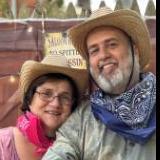Woodpeckers Are Behind a Lot of the Problems in the World . . .
A Glimpses of Wonder Entry
Let’s face it—if you hear an annoying rattle outside your window at sunrise, odds are good it’s not your neighbor’s car. It’s a woodpecker. And while they might look cute on a greeting card or a cartoon, in real life, woodpeckers are surprisingly destructive.
They’ve been known to:
– Punch holes in siding like it’s drywall,
– Riddle telephone poles with enough cavities to qualify as dental emergencies,
– Peck at chimney caps, rain gutters, and anything that echoes just right.
Some even go after metal signs—on purpose—just for the satisfying clang it makes. Why? Because some species drum not only for food but also for communication. In fact, when you hear that rapid tapping, they may be saying, “Hey, look at me!” Or worse—“This is my tree, go find your own.”
But here’s the thing: it’s not malicious. It’s design.
Built for Impact
The woodpecker is a living jackhammer—but with features no power tool has. When it strikes wood, it does so with up to 1,200 G’s of force (yes, G’s—as in gravitational force). A human would black out or suffer brain damage from a fraction of that. So how does the woodpecker survive?
Jehovah equipped it with an astonishing suite of protections:
– Shock-absorbing skull: A thick, spongy bone behind the beak helps distribute the impact evenly.
– Tightly packed brain: Its brain is small and snug, reducing movement during each strike.
– Third eyelid (nictitating membrane): Like a tiny seatbelt for the eyes, it keeps them from popping out during rapid drilling.
– Specialized beak: Hard at the tip, springy at the base—built to chisel wood without jarring the brain.
And then there’s the tongue. It’s not just long—it’s outrageously long, often wrapping around the back of the skull when not in use. Barbed and sticky, it’s perfect for skewering ants, beetles, and larvae hiding deep inside bark.
Not Just Hungry—Strategic
Some woodpeckers, like the yellow-bellied sapsucker, don’t just find their food—they set the table for it. They drill neat rows of holes in tree bark, not to eat the wood, but to make it bleed. The sap that oozes out becomes a sugary lure for insects like ants, flies, and wasps.
In other words, they create their own bug buffet.
Then, when the insects gather to feast, the woodpecker returns—sometimes hours later—and slurps them up with that amazing tongue. It’s not only brilliant, it’s patient and precise. The bird is using one part of Jehovah’s creation (sap flow) to attract another (insects), all while causing minimal harm to the tree.
Forest Health Inspector
Even more impressive? Woodpeckers often go after trees that are already in trouble. Sick, rotting, or insect-infested trees get the most attention. A healthy tree might get a few experimental taps. But a tree full of termites or boring beetles? That’s a sirloin steak with wings.
In doing so, woodpeckers help control insect populations and slow the spread of disease in forests. The holes they leave behind? They become homes for all sorts of creatures—bluebirds, chickadees, owls, squirrels, and more.
So yes—woodpeckers may be behind a lot of the “problems” in your world… if that world includes cedar shingles, aluminum flashing, or peaceful morning coffee.
But in the bigger picture, they’re guardians of the woods. Gardeners with wings. Evidence that even the noisiest part of creation can still be part of a silent plan.
And that plan—down to the barbs on a woodpecker’s tongue or the angle of its skull—is no accident.
There are about 240 species of woodpeckers around the world, each one uniquely designed to thrive in its own setting. You’ll find them almost everywhere—except Australia, New Zealand, Madagascar, and the polar regions. Here are six of the most well-known:
🪵 Downy Woodpecker – The smallest, often spotted in backyards
🪵 Pileated Woodpecker – Large, loud, and crowned in red
🪵 Northern Flicker – Ground-loving ant eater with spotted feathers
🪵 Yellow-bellied Sapsucker – Sap-well artist and insect trapper
🪵 Acorn Woodpecker – Hoards acorns like a winged squirrel
🪵 Gila Woodpecker – Desert dweller that nests in cacti
Each one is a feathered marvel—another reason to stand in awe at what Jehovah has made. Psalm 104:24




0 Comments
Recommended Comments
There are no comments to display.
Join the conversation with your brothers and sisters!
You are posting as a guest. If you are already a member, sign in now to post with your existing account.
Note: Your post will require moderator approval before it will be visible.